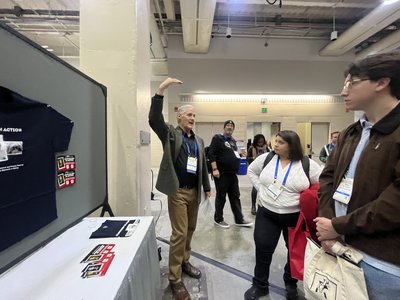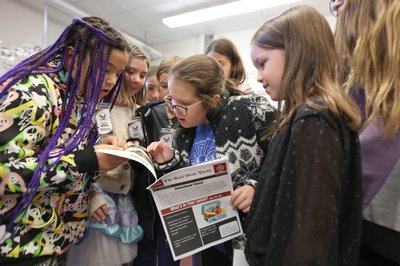by David Cutler, teacher
I’ve never been anti-technology. I’ve even written about ways AI can help students when it’s used with care. But my first real encounter with ChatGPT-5 stopped me cold. This is different. This is dangerous. And I’m finally sounding the alarm.
Since ChatGPT first debuted in 2023, I’ve relied on a system.
Early in the semester, I got to know each student’s unique voice through smaller, in-class assignments. Only later would I assign longer papers. By then, I recognized the rhythm of their sentences, the way they transitioned between ideas, even the little detours they took before circling back. If something came in that didn’t match, I noticed.
This is different. This is dangerous. And I’m finally sounding the alarm.
That safeguard is gone. Take a look at these papers ChatGPT-5 produced for several of my assignments — I annotated and graded them as if the program were an actual student.
ChatGPT-5 can now mimic a student’s writing so precisely that I struggle to tell the difference. Feed it a few past essays, and it will flawlessly reproduce the quirks, pacing and diction. It can generate a paper in that same voice — complete with accurate citations — polished to look as if it took hours.
Even a hard-to-find PDF or obscure text poses no challenge; upload it, and GPT-5 will read, analyze and weave it seamlessly into the work. I’m not revealing any trade secrets here. Students know this. Teachers know it — or they should.
While many educators are working hard to integrate generative AI into their classrooms, I’m now convinced that when it comes to teaching writing and critical thinking, AI takes far more than it gives. The exchange isn’t remotely equal. It’s not a Faustian bargain — it’s worse.
What AI offers in efficiency, it erodes in depth. Students can lean on it before developing the habits, patience and skill that real writing demands. The slow, sometimes frustrating process of wrestling with a sentence, choosing the evidence that best supports an argument or discovering a new insight mid-draft — these are the moments when thinking happens, however time-consuming, inconvenient and uncomfortable.
The slow, sometimes frustrating process of wrestling with a sentence, choosing the evidence that best supports an argument or discovering a new insight mid-draft — these are the moments when thinking happens, however time-consuming, inconvenient and uncomfortable.
When calculators first showed up in classrooms in the 1970s, many teachers believed they would destroy math education. Suddenly, students did not have to memorize multiplication tables, slog through long division or grind out multi-step problems by hand.
The fear was that basic numeracy would collapse. And yes, the disruption was real — tests had to be rewritten, lessons redesigned and everyone had to figure out when calculators could be used without hollowing out learning.
But here is the key difference: calculators automated only one part of the process — computation.
They did not decide which problem to solve, figure out how to set it up, interpret the answer or explain why it mattered. The student still had to understand the question, choose the right formula and apply it correctly.
GenAI is an entirely different kind of disruption. It does not just solve a step — it can take over the entire process: brainstorming, outlining, writing, revising, even embedding accurate citations. That is not replacing a tool — that is replacing the thinking itself.
At this point, I’m convinced there’s only one viable solution: more in-class writing. I’m done assigning large take-home papers. The tech is too advanced, too easy to use and too aggressively marketed. Companies like Phrasely.ai target students directly on social media, openly promising to help them beat AI detectors and fool their teachers. Now, ChatGPT-5 rolls all of that into one seamless package.
AI companies like Google Gemini, Claude and Perplexity sell their technology as empowerment. ChatGPT-5's ads glamorize “working smarter,” which in this case really means not working at all. They know exactly how to make cutting corners look cool — especially to already overextended teenagers juggling sports, jobs, social lives and college applications.
[W]hen a free or inexpensive tool can fully replace the thinking process, it stops being a support and becomes a substitute brain.
Not every student will cheat, but it’s naïve to think more won’t. Many educators — though in my circle, fewer and fewer — still argue that there is a place for “ethical generative AI use” in the classroom. I used to agree. But when a free or inexpensive tool can fully replace the thinking process, it stops being a support and becomes a substitute brain.
So, what now?
In my high school history classes, every substantial piece of writing will happen in class, either in old-school blue books or on Digiexam — a secure, locked-down digital platform that lets me monitor work in real time — so I can see the process unfold as it happens.
Students will draft in class, brainstorm openly and revise alongside peers. Big assignments will be broken into smaller, visible stages so I can watch their thinking evolve. Something will have to give; with more time devoted to writing in class, I may cover less content.
The point isn’t to ban tools — it’s to ensure students can think without them. A computer can churn out a paper in seconds, but what matters is whether a student can explain that paper’s ideas in conversation, adapt them in debate and defend them when challenged.
Because when students hand over the thinking to a machine, the loss isn’t just academic integrity — it’s intellectual independence. We risk raising a generation that trusts algorithms over their own judgment.

Courtesy: David Cutler
This piece originally appeared on Medium here and has been lightly edited for purposes of length.
About the author
David Cutler teaches American history, government and journalism at Brimmer and May, an independent school in Chestnut Hill, Mass. His writing has appeared in the National Association of Independent Schools, PBS News Hour, Edutopia, The Atlantic and Independent School Magazine. David created the Private School Journalism Association in 2019 and is its executive director. Follow David on Twitter @spinedu.
If you would like to pitch an Educator Voice article to News Hour Classroom, contact education@newshour.org.
Sign up to receive our weekly newsletter with Daily News Lessons and community events.
To provide feedback on News Hour Classroom's resources, click here.






